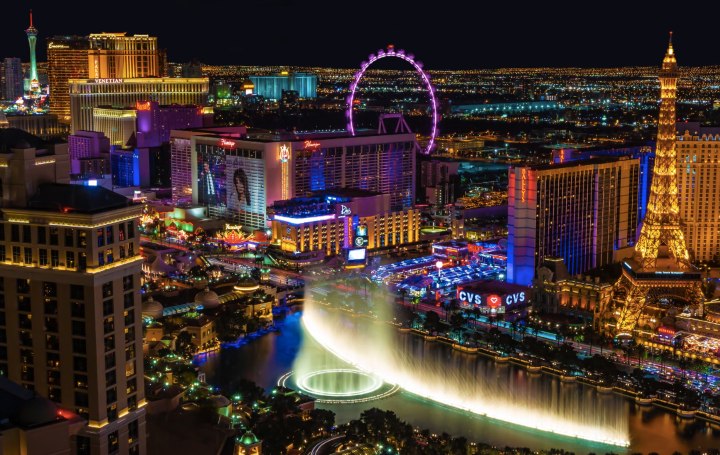Nevada, and more specifically, Las Vegas, is a vibrant, high-energy environment which attracts some of the biggest names for some of the world’s most significant sporting events.
It’s not just MMA which has found a base out in the desert and propelled itself into the international spotlight. Combat sports, in general, have always found a suitable home in Nevada, even before MMA existed. Back when more unsavory characters owned casinos in Las Vegas, boxing was a much more popular sport than it is today and drew in considerable crowds.
Professional prizefighting in Nevada
Combat sports such as MMA and boxing satisfy an element of barbarism, an intrinsic hard-wired characteristic of the human genome. When bottled, controlled and displayed by some of the world’s most gifted prizefighters, it is an art form and a pure sport like no other. While some may argue this case, a great boxing or cage fight signals the fine line between brutalism and unbridled glory that ignites the aura of entertainment in its most primitive form.
It’s perhaps most fitting that Nevada’s sports betting legislation has created a setting for Dana White’s organization to become one of the big names in sports entertainment during the 21st century.
During the early years of Vegas, it didn’t host huge fights as it does now, as they were often reserved for purpose-built sporting arenas in other parts of America, such as Madison Square Garden. However, as Las Vegas began to generate hundreds of millions of dollars in tourism and revenue through its gigantic and luxurious hotel-casinos, it fueled the development of more prominent locations and large sporting halls. As a result, it hosted some of the world’s top entertainers.
The prizefighting game is considered one of the most lucrative in sports. It attracts a global audience. Once promoters started to connect the dots and realize they could sell a super fight as a Las Vegas weekend package, it became the premium destination for some of the world’s most iconic boxers to fight, such as Mike Tyson, Lennox Lewis, Manny Pacquiao and Floyd Mayweather.
From the underground to the mainstream
Although UFC started outside of Nevada, once Dana White became involved with the organization in 2001, the rebranding and the business model centered around using a Las Vegas base in a bid to rival other huge combat sports events at the time.
Around this time, Lennox Lewis was the heavyweight world champion, and his bouts would sell out in Las Vegas. UFC cards were doing modestly well but didn’t match up to the colossal boxing cards that would bring the strip to a standstill. Nowadays, UFC cards easily rival the popularity of the boxing cards, and some of the top events will generate just as much hysteria as the biggest boxing matches.
Following the successful package that boxing offered in Las Vegas, Dana focused on the fact that it wasn’t just a UFC card in Vegas. You were also coming to spend a night or weekend in one of the world’s most magical and notoriously exciting locations.
When Dana first took over the UFC, they were averaging between 50,000 to 200,000 PPV buys depending on the size of the event. Nowadays, multiple events have cleared one million PPV buys.
Other factors
When you examine the immensely successful business model that has been perfectly executed by Dana White and his organization over the last 20 years, it would be naive to presume he is the only one responsible for the incredible rise of MMA.
The world’s biggest podcaster, Joe Rogan, who also acts as a commentator for the UFC, has brought vast numbers of people to UFC through his podcast and has popularized specific disciplines that UFC fighters excel in, such as Brazilian Jiu Jitsu.
Although Nevada has helped sell the UFC cards, let’s not forget that there is an excellent business model within the UFC that ensures the best fight the best. Sometimes, these fighters will meet on the same card, ensuring viewers get their money’s worth.
All of this results in a top product, and it is something that other combat sports can learn from. Unfortunately, boxing has suffered a lot over the last decade due to fighters not fighting each other in their primes and ample red tape, which has resulted in a poor product with thin cards.
Conclusion
Viva Las Vegas is the global capital of the fight game; as far as individual locations go, Madison Square Garden is an iconic venue. However, Las Vegas is so synonymous with the rise of the UFC that the octagon and some of the jaw-dropping situations that have unfolded inside it are almost a part of Las Vegas in the same way the bright, sprawling casino floors are.
Despite all the turbulence the UFC initially encountered as an organization, it has started positioning itself as the number one combat sport. It has the marketability, business model and solid foundation to become the most prominent combat sport within the next 10 years.
Whatever happens in the years to come, you can guarantee Nevada will be the host location where it all unfolds and that it will remain the global fighting capital for quite some time.

















